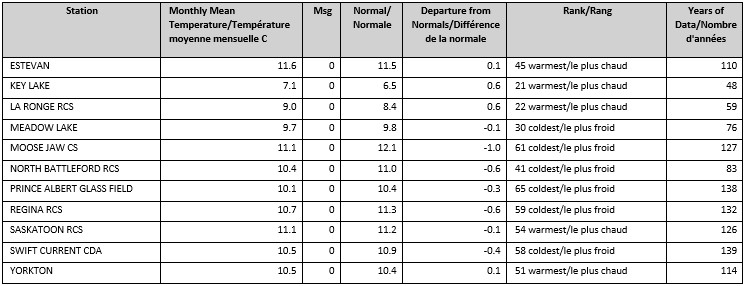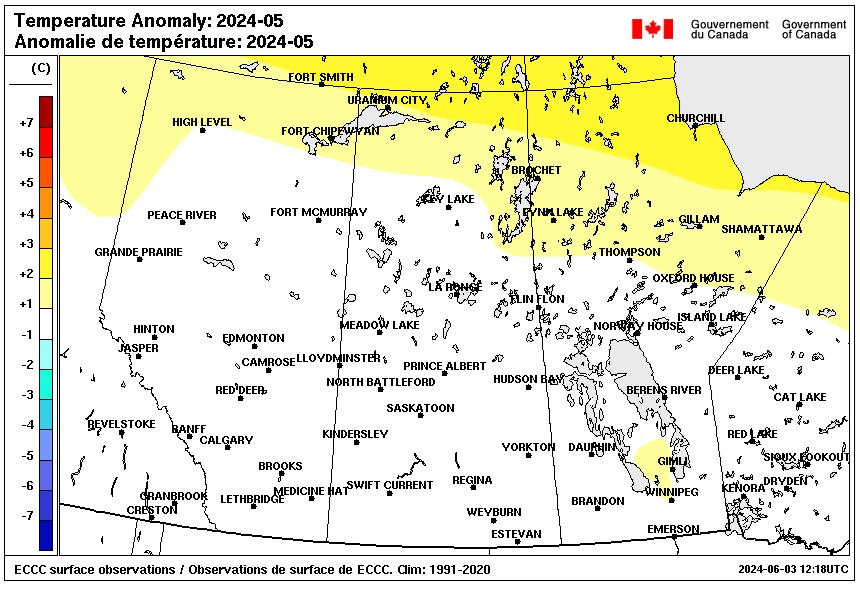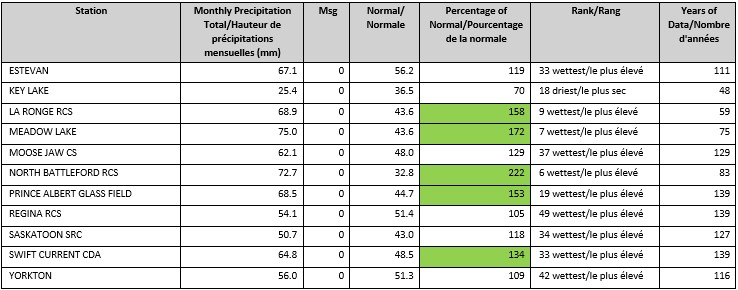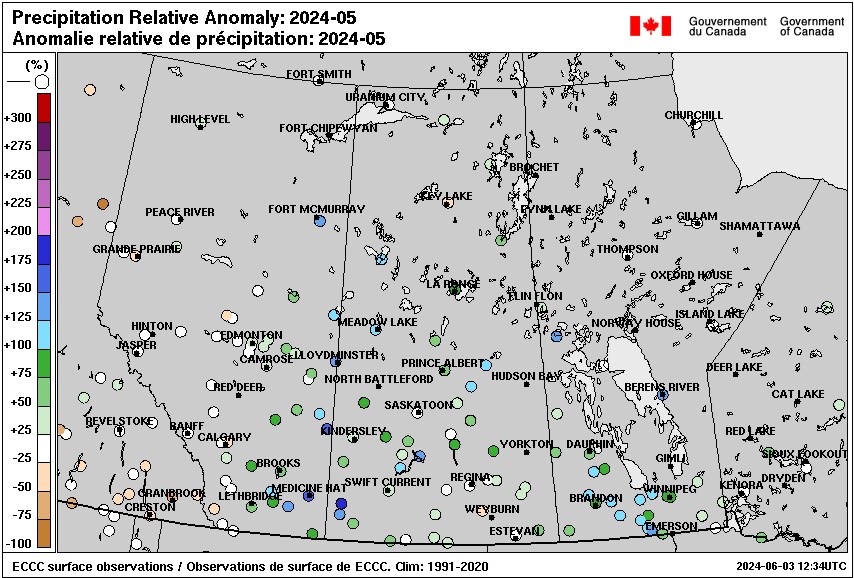The month of May can be best described as wet with near normal temperatures.
Environment Canada Meteorologist Terri Lang says it’s a good thing considering the winter and early part of spring was dry.
“After it being so dry for so long, to see so many stations recording above average precipitation, really good timing,” said Lang. “May was a good news story all around.”
Each weather station was at or near their monthly average. Regina had an average temperature of 10.7 degrees.


The majority of weather stations either recorded their normal average of precipitation or exceeded it, except for Key Lake where it got 70 per cent of its normal precipitation with 25.4 mm. Regina got 54.1 mm, just above its average for this time of year; Yorkton as well at 56 mm, Moose Jaw 62.1, and Saskatoon 50.7. La Ronge, Meadow Lake, and North Battleford, which was aided by a pair of “good storms”, were in their respective top 10s for the wettest May.
“Pretty amazing,” Lang summarized.


Lang noted less lightning strikes in May compared to the yearly average. Just over 18-thousand lightning strikes were detected in May, compared to the average of 22-thousand 650.
“May is sort of the kick-off to lightning season across the prairies, but it was below average and we’ve actually seen that trending over the last couple years that the number of strikes we’ve been getting has been going down. What is interesting as well for May is…a number of big weather systems come through. Everyone got in on the moisture and you don’t see a lot of thunderstorms when there’s a big weather system like that, so it kind of goes hand-in-hand with these big weather systems that give general rain and this lack of lightning so it does make sense.”


















